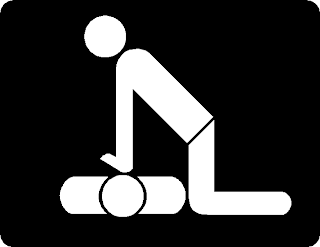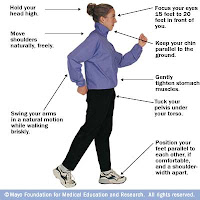Cancer occurs when abnormal cells grow and multiply uncontrollably. The buildup of these extra cells often forms a mass of tissue called a lump, growth, or tumor, which can be benign (non-cancerous) or malignant (cancerous). Malignant tumors are dangerous because they are cancerous, can be life-threatening, can grow back after being removed, and can spread to and damage nearby organs and tissues.
Breast cancer can occur in both men and women, although male breast cancer is rare. Except for skin cancer, breast cancer is the most common cancer among American women, in which 1 in every 8 women will be diagnosed with breast cancer in their lifetime. Nearly 200,000 women are diagnosed with breast cancer each year in the United States. In addition, 2,000 men are diagnosed with breast cancer. Male breast cancer is a very serious disease and needs to be treated as soon as possible.
What is a normal breast?
What is normal for you may not be normal for another woman. The way your breasts look and feel can be affected by getting your period, having children, losing or gaining weight, and taking certain medications. Breasts also change as you age.
Although there is no exact cause for breast cancer, there are several risk factors that may increase your chance of getting breast cancer:
· Age – Risk increases with age. Most women are diagnosed when they are over 60 years old.
· Personal history – Having breast cancer in one breast increases your risk of getting cancer in your other breast.
· Family history – Your risk of breast cancer is higher if your mother, father, sister, or daughter had breast cancer. Your risk is even higher if your family member had breast cancer before age 50. Having other relatives (on either side of your family) with breast or ovarian cancer may also increase your risk.
· Certain genetic mutations – Mutations in the BRCA1 or BRCA2 genes increase the risk of breast cancer. Tests can reveal the presence of these gene mutations in families where many women have had breast cancer. In these cases, health care providers may recommend ways to try to reduce the risk of breast cancer and screening at an earlier age.
· Race – Certain ethnic groups have a higher risk of breast cancer.
· Breast density – During a mammogram or breast x-ray, breasts appear as having dense and non-dense (fatty) tissue. It is felt that women whose mammograms show larger areas of dense tissue are at increased risk.
· Being overweight or obese after menopause – The chance of getting breast cancer after menopause is higher in women who are overweight or obese.
· Lack of physical activity throughout life.
· Drinking alcohol – Studies show that the more alcohol a woman drinks, the greater her risk of breast cancer.
Additional reproductive risk factors:
· The older a woman is when she has her first child, the greater her chance of breast cancer.
· Women who never had children are at an increased risk.
· Women who had their first menstrual period before age 12 are at an increased risk.
· Women who went through menopause after age 55 are at an increased risk.
· Women who take menopausal hormone therapy for many years have an increased risk.
Having a risk factor does not mean that a woman will get breast cancer. Most women who have risk factors never develop breast cancer; however, if you experience risk factors it is important to discuss them with your doctor.
Symptoms
The early stages of breast cancer usually do not cause symptoms, however, as the tumor grows, it can change how the breast looks or feels. Common changes include:
· A lump or thickening in or near the breast or in the underarm area
· A change in the size or shape of the breast
· Dimpling or puckering in the skin of the breast
· Discharge (fluid) from the nipple, especially if it’s bloody
· Scaly, red, or swollen skin on the breast, nipple, or areola (dark skin at center of breast). The skin may have ridges or pitting, similar to the skin of an orange.
You should see your primary care physician if you are experiencing any of these symptoms. Although these symptoms may be caused by other health problems besides breast cancer, it is important to have them checked in order to diagnose and treat the problem.
Detection and Screening
Doctors recommend that women have regular clinical breast exams and mammograms to find breast cancer early and before symptoms are present. Treatment is more effective when the cancer is found in an early stage.
Clinical Breast Exam – Your health care provider will check your breasts for differences in shape or size between your breasts, as well as for lumps and other symptoms listed above. If symptoms are present your doctor will recommend further testing. Clinical breast exams should be done annually by your Gynecologist or health care provider, beginning at age 18.
Mammogram – This is an x-ray of breast tissue that can often show a lump before it can be felt. It is important for women, beginning at age 40, to have a mammogram every year. Women who are younger than 40 and have risk factors should talk to their doctor about when to have their first mammogram and how often.
Breast Self-Exam – This exam is not recommended as a screening tool for breast cancer. However, it is a tool that helps women become familiar with their breasts, which is an important step to recognizing symptoms early. Knowing what is normal for your breasts, in the way they look, feel, and change throughout the month is the purpose of practicing a breast self-exam. Visit BSE for more information.
Prevention
· Know your family history and discuss it with your doctor
· Have your screening done when prescribed by your doctor
· Maintain a healthy diet, rich in fruits and vegetables with vibrant colors
· Maintain regular physical activity, recommended at 30 minutes a day, 5 times a week
· Maintain a healthy weight; Body Mass Index is an accurate measure for most
· Limit your intake of alcohol
· Practice regular breast self-exam. Know what is normal for your breasts and recognize symptoms early and seek treatment.
During the month of October, be aware of your risk for breast cancer. Make it a priority to talk to your doctor about your family history and any risk factors you may have. Stay on top of your screenings and join the fight against breast cancer by protecting yourself. Encourage loved ones and friends to do the same!
Additional Resources:
Contact your local American Cancer Society chapter to learn how you can become involved in the fight against breast cancer or visit http://www.cancer.org/index for additional resources.
Find a race near you: Susan G. Komen Race for the Cure
National Breast Cancer Foundation, Inc.

















